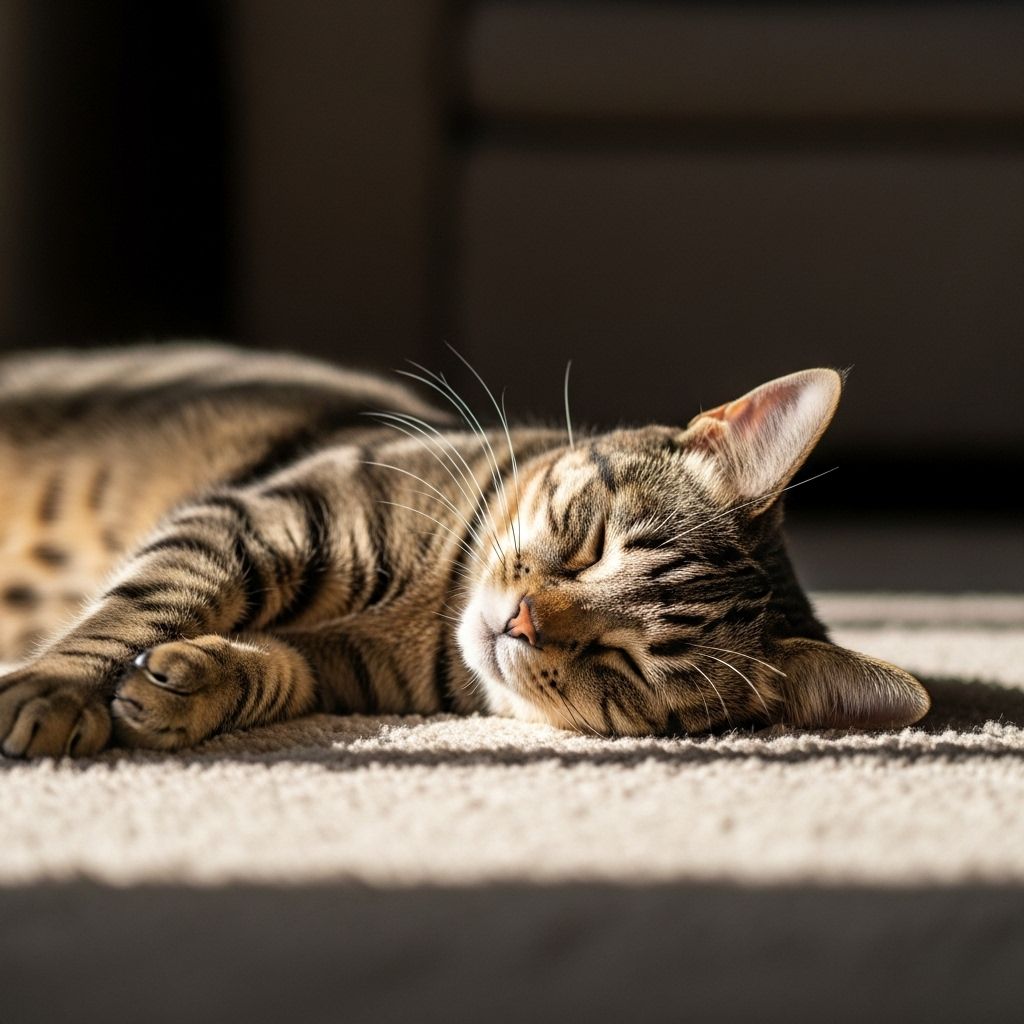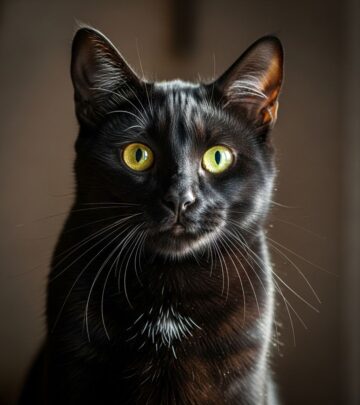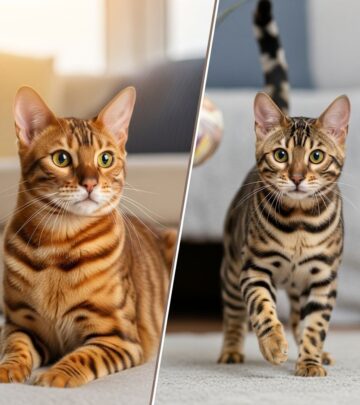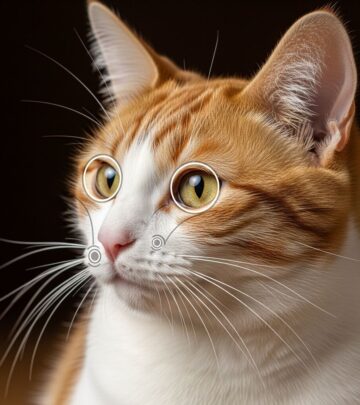Do Cats Dream? Exploring the Sleepy Secrets of Feline Minds
Whisker quivers and soft murmurs reveal the secret world unfolding in a cat’s slumber.

Image: HearthJunction Design Team
Cats spend a remarkable portion of their lives sleeping, often curled up or sprawled in sunbeams, twitching their paws or murmuring softly. But what really happens in the minds of cats when they sleep? Do they experience dreams, much like humans? Scientific evidence and behavioral observations suggest that cats do indeed dream, inviting both curiosity and wonder about what those feline dreams might contain. In this article, we explore what science reveals about cats and their sleeping minds—delving into the sleep stages, what cats might dream about, the signs that your cat is dreaming (or having a nightmare), and tips for helping your furry friend enjoy restful, healthy sleep.
Understanding Feline Sleep: The Basics
To uncover the secrets behind cat dreams, it’s essential to first understand how cats sleep. While it’s common knowledge that felines are expert nappers, their sleep cycles are surprisingly complex, closely mirroring those of humans and other mammals.
- Cats sleep 12–16 hours per day on average; some senior or young kittens may sleep even more.
- Their sleep is divided into light sleep, deep (slow-wave) sleep, and REM (Rapid Eye Movement) sleep.
Throughout a typical sleep cycle, cats move between phases just like humans do. The REM stage is especially crucial: this is where most vivid dreaming occurs.
What Is REM Sleep?
REM sleep, or Rapid Eye Movement sleep, is characterized by rapid movement of the eyes beneath closed lids, increased brain activity, irregular breathing, and major muscle relaxation. In cats, as in humans, this stage is strongly linked with dreaming.
- During REM sleep, a cat’s brainwaves appear similar to those experienced during alert wakefulness.
- Most vivid and memorable dreams—complete with imagined sights, sounds, and even emotions—occur during this stage.
- Their eyes may dart beneath their eyelids, while their whiskers, tails, or paws twitch.
Research using electroencephalogram (EEG) recordings has shown that cats show almost identical sleep patterns to humans during REM, suggesting that the dreaming process is likely quite similar across species.
Why Do Cats Twitch and Move in Their Sleep?
If you’ve ever spotted your cat’s paws quivering, whiskers twitching, or even a tail flicking while she sleeps, you’re almost certainly witnessing dream activity in action. These physical signs—often referred to as “sleep twitches”—are thought to be the outward symptoms of the dream world your cat is experiencing.
- Twitching, paw-paddling, and even vocalizing (like quiet mews, chirps, or purrs) usually happen during REM sleep.
- These movements occur because the brain temporarily reduces muscle tone during dreaming, which prevents cats from fully acting out their dreams.
- Occasional twitches are normal and healthy, while frequent violent movements could signal a sleep disorder or neurological issue.
One classic experiment by neuroscientist Michel Jouvet in the 1960s found that cats with damaged pons (a brainstem region responsible for suppressing movement during REM sleep) would physically act out their dreams—stalking, pouncing, or “catching” unseen prey. This provided compelling evidence that much of the feline dream world is connected to hunting or play behaviors.
Do Cats Dream? The Science Says Yes
Scientific consensus holds that cats do dream, based on physiological sleep studies and observed behaviors. Like other mammals, cats cycle through REM sleep, a stage closely tied to dreaming.
- Research has shown that not only do cats and humans have similar brainwave activity during REM sleep, but experiments (including with other animals like rats and birds) have revealed that brain regions active during daily life are re-activated during dreams.
- A study on zebra finches, for instance, matched daytime brain activity from singing with similar patterns during sleep—indicating the birds “practiced” singing in their dreams.
Thus, it’s widely accepted that when your cat appears to be chasing something in her sleep or flicking her tail, she may genuinely believe she’s back on the hunt or playing with a favorite toy.
What Do Cats Dream About?
While science confirms the existence of feline dreams, what remains a deeper mystery is what cats actually dream about. Because cats cannot share their dreams, researchers and pet owners are left to make educated guesses based on sleep studies and observable behaviors.
- Hunting and Play: Since cats are instinctual hunters, it’s believed much of their dream content relates to chasing, stalking, and pouncing on prey.
- Daily Experiences: Cats likely replay moments from their day—playing with a toy, snuggling with a caregiver, or having a tiff with another cat.
- Sensory World: Because cats rely heavily on their sense of smell, their dreams may be filled with olfactory cues—imagining the scent of food, grass, or another animal.
As veterinary neurologist Adrian Morrison notes, “When cats experience REM sleep, they tend to move their heads as though they’re following or watching something.” It’s likely your pet’s dreamy adventures involve the activities they love most when awake.
Can Cats Have Nightmares?
Just as cats can dream pleasant dreams, evidence suggests they might also experience nightmares. Anecdotal stories are common—some cats may suddenly wake up frightened, puffed up, or seemingly disoriented after a nap.
- There’s no definitive scientific proof that cats have nightmares, but waking abruptly, making distressed sounds, or acting fearful upon awakening might signal a bad dream.
- Cats who have experienced trauma or stressful events could be more likely to relive these in their dreams, much as humans do.
- Comfort and gentle reassurance are your best tools if your cat seems unsettled after sleep.
How Can You Tell If Your Cat Is Dreaming?
Though we can’t see inside a cat’s mind, there are several telltale signs that your feline friend is deep in dreamland:
- Rapid movements of the eyes beneath eyelids
- Gentle twitching of whiskers, ears, tail, or paws
- Quiet vocalizations—soft chattering, mews, or purrs
- Changing facial expressions, such as twitching noses or mouths
These signals, especially when grouped together, suggest your cat is in REM sleep, likely dreaming vividly.
Do All Cats Dream Alike?
While all cats experience REM sleep, individual dream patterns may vary:
- Young kittens and older cats tend to sleep more and possibly dream more frequently due to the increased time spent in REM sleep.
- Personality and lifestyle differences (indoor vs. outdoor cats, playful vs. sedentary) may also shape the content of their dreams.
- Cats with neurological conditions or sleep disorders may exhibit abnormal dream-related behaviors or movements during sleep.
Should You Wake a Sleeping Cat?
It’s generally recommended to let sleeping cats lie—especially when they are in deep or REM sleep. Startling a dreaming cat can cause disorientation or, rarely, defensive reactions. Instead, if you must wake your cat (for example, for medication), do so gently by calling their name softly or making quiet noises in the room.
- Most dream-related movements and sounds are harmless and normal to observe.
- If your cat seems trapped in a distressing dream or stuck in a nightmare, calmly speaking or gently touching her may be appropriate, but avoid sudden, loud actions.
How to Support Healthy Cat Sleep and Dreaming
Cats need restorative sleep just like humans, including time to dream. Here’s how to help your cat enjoy the sweetest dreams:
- Establish a regular sleep schedule. Encourage play and feeding at consistent times.
- Provide a cozy, quiet sleeping area. Cats love comfort and warmth, so choose a bed away from drafts and noise.
- Keep your cat physically and mentally stimulated during waking hours. Interactive play, climbing trees, and puzzle feeders support healthy sleep patterns.
- Ensure your cat’s health. Schedule regular checkups and promptly address any sleep disturbances, excessive twitching, or distress during sleep.
Feline Sleep Cycles: A Scientific Snapshot
| Sleep Stage | Duration (in Cycle) | Key Features |
|---|---|---|
| Light Sleep | 10–30 minutes | Easy to wake, brief dreaming |
| Deep Sleep (Slow-Wave) | 5–10 minutes | Healing and restoration, minimal movement |
| REM Sleep | 2–10 minutes | Dreaming occurs, rapid eye and body twitches, low muscle tone |
Frequently Asked Questions About Cat Dreams
Do cats dream every time they sleep?
Cats are likely to enter REM sleep during most extended naps, so regular dreaming is very common—especially in secure, comfortable environments.
Can cats remember their dreams?
Science hasn’t established whether cats consciously remember dreams. However, since dreams are thought to help process memories, it’s plausible that dreaming consolidates a cat’s learning and experience.
Are cat nightmares dangerous?
Most sleep twitches and vocalizations are normal and harmless. However, if your cat wakes up frightened or distressed often, consult your veterinarian to rule out health or behavioral concerns.
Why does my cat twitch so much in her sleep?
Light twitching is a normal aspect of REM sleep and typically means your cat is dreaming. Violent or repetitive movements may be a sign of a medical issue and should be discussed with a vet.
Do cats dream in color or black and white?
Cats see color differently than humans, but they likely dream in the same way they perceive the world while awake—so their dreams would use the same range of sight and smell they experience day to day.
Fun Facts About Cat Sleep and Dreams
- Cats spend about 2/3 of their lives asleep. For example, a 9-year-old cat has spent 6 years snoozing!
- Kittens and seniors sleep most. Growth and healing require more shut-eye, and these life stages see the most REM sleep.
- Cats are crepuscular. Naturally most active at dawn and dusk, their sleep patterns often shift accordingly.
Conclusion: Seeing Into the Dreamy World of Cats
While your cat dozes the day away, science supports what many pet lovers have long suspected: cats do dream, possibly about their favorite games, scents, and even you. From swift paw twitches to soft mews, these signs offer a window into your cat’s mysterious inner life. Ensuring your cat sleeps well—and dreams safely—is one of the best gifts you can offer your feline companion.
- Respect your cat’s need for sleep and avoid unnecessary interruptions.
- Monitor for any changes in sleep patterns, excessive distress, or abnormal movements, and consult your vet if concerned.
- Enjoy observing your cat’s gentle dreamland journeys—one of the small joys of sharing life with a cat!
References
- https://www.petmd.com/cat/general-health/do-cats-dream
- https://thecatisinthebox.com/blogs/kitty-contemplations/do-cats-dream
- https://www.purina.com.au/do-cats-dream.html
- https://www.purina.com/articles/cat/behavior/understanding-cats/do-cats-dream
- https://www.seattleareafelinerescue.org/do-cats-dream/
Read full bio of Srija Burman












